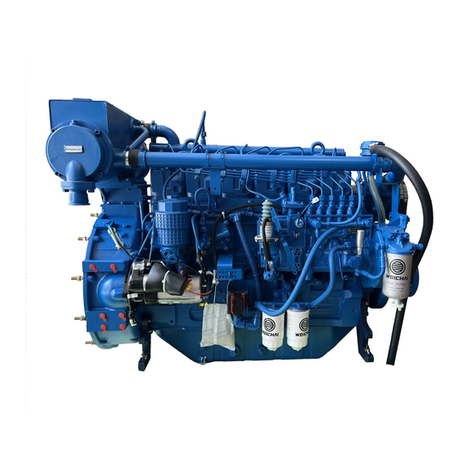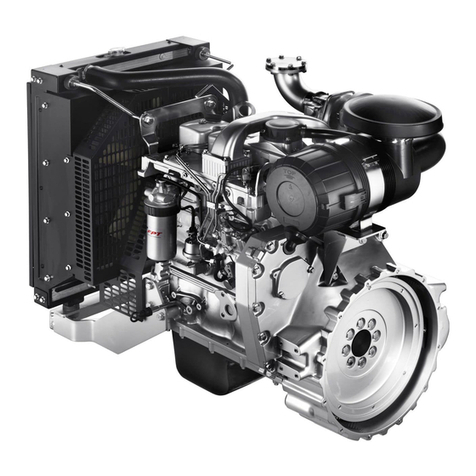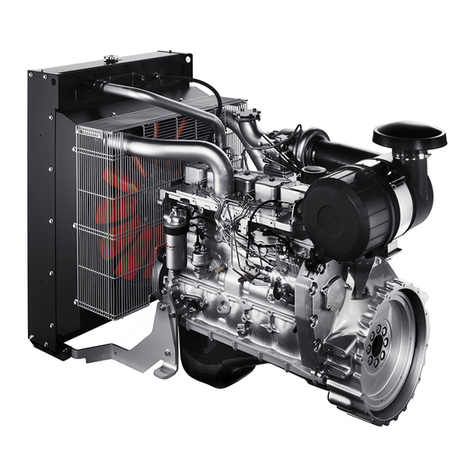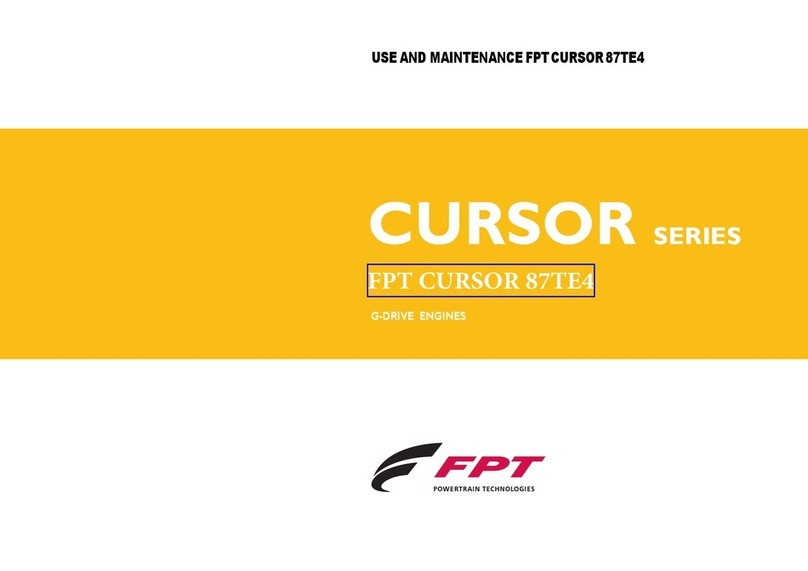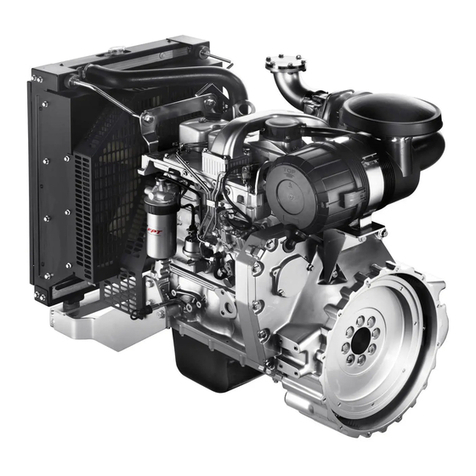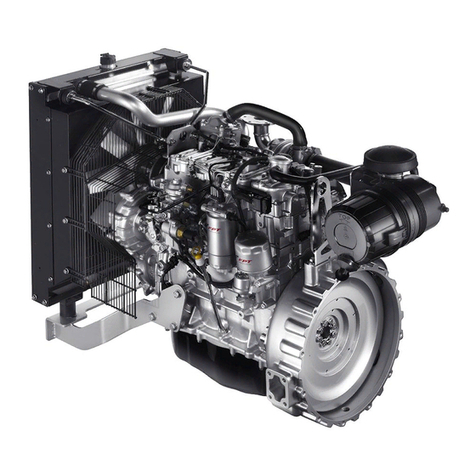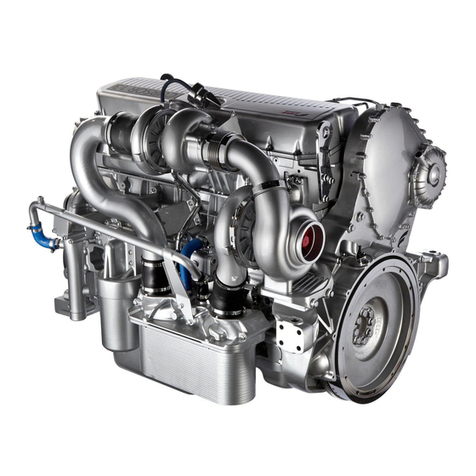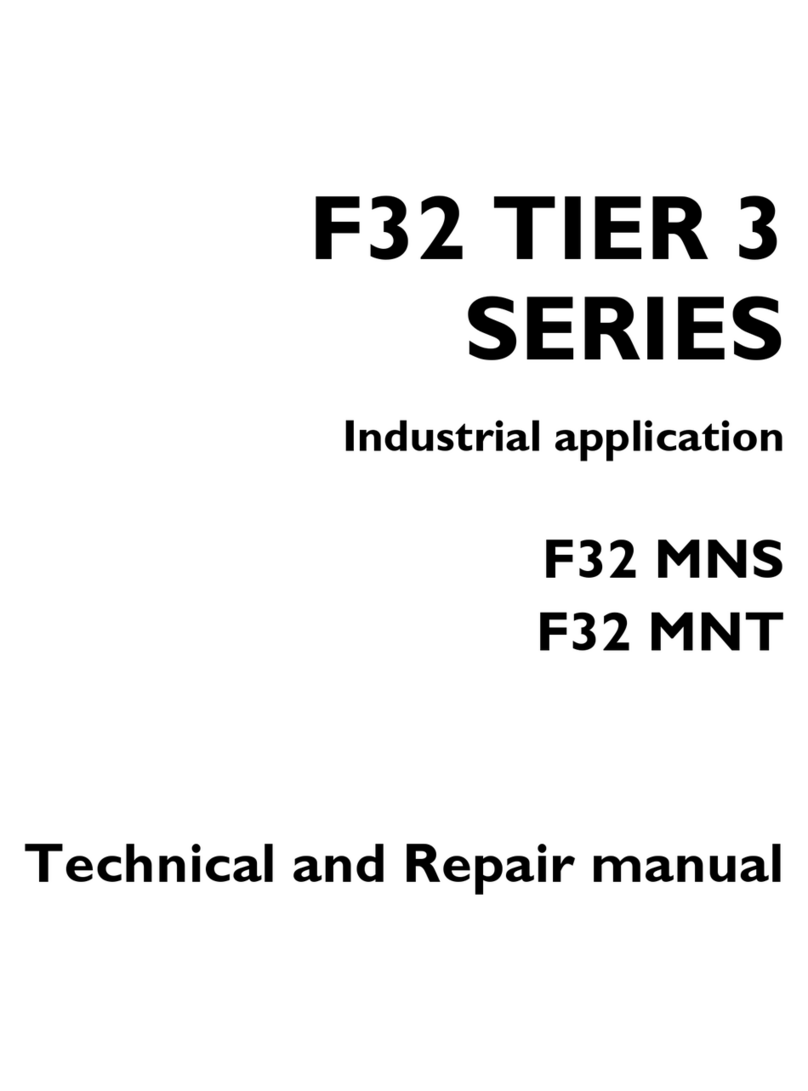
11
ENGLISH
FOR PROPER ENGINE USE
Check there is sufficient fuel in the tank before each start.
Avoid prolonging the duration of the start control.
Do not idle for long periods since this increases the production of
harmful emissions from the engine and does not guarantee its
optimum performance.
The engine speed must be increased and decreased gradually so as
to permit normal combustion and the optimum functioning of all
engine components.
During use, check periodically that:
- the temperature of the engine coolant does not reach the alarm
thresholds;
- the oil pressure remains within normal values.
The speed and power values must comply with that specified in the
technical-commercial documentation.
Particular attention must be paid to engines that equip the
emergency generating units for which frequent efficiency checks are
required in order to guarantee their prompt start in all cases when
required.
SPECIAL WARNINGS
High coolant temperature
In the event of an excessive temperature or the signalling of the alarm,
disengage the load and stop the engine in order to check the condition
of the cooling circuit.
Also check and have the following checked:
the condition of the ancillary belt;
the operation of the thermostatic valve;
the cleanliness of the heat exchanger (radiator).
Low lubricant oil pressure
Should the pressure indicated by the instrument be considered
insufficient or if the “low oil pressure” warning light comes on, stop the
engine and check the oil level. If necessary, top up the oil according to
the instructions contained in the section CHECKS AND
MAINTENANCE. If the fault persists, contact a Service centre.
ATTENTION!
When the engine is hot, pressure builds up in the
cooling circuits which may eject hot liquid violently,
resulting in a risk of burns.
Open the filler cap of the coolant tank only if necessary
and only when the engine is cold.
